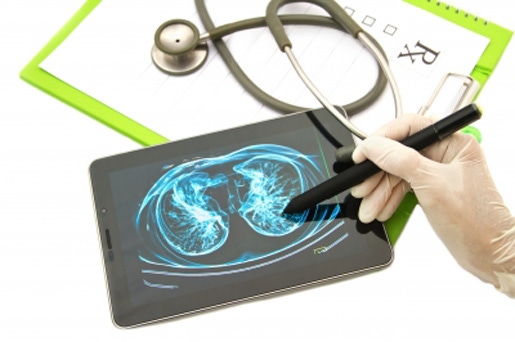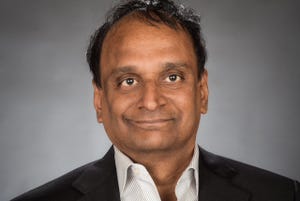Dreaming up the next digital health disruption can be inspiring, but to move forward, the industry needs to share best practices, take on tangible applications, and collaborate.
April 11, 2017

Dreaming up the next digital health disruption can be inspiring, but to move forward, the industry needs to share best practices, take on tangible applications, and collaborate.
Mike Sanders
It may be hypocritical, but I find most articles on digital health distracting rather than helpful to medical device development. That's because most media coverage focuses on the latest company, product, or service, instead of tangible examples of digital health in regulated medical devices.
Admittedly, following digital health technology is fun, but for me, most announcements about new products raise questions. Take, for example, the 510(k) clearance of the Samsung Health App for reviewing and monitoring vital signs at home. I'm particularly interested in the app being coupled with new features like "Ask an Expert," which allows users to ask qualified physicians their health questions. I would like to review the company's note to file with FDA, as such new intended uses surely impact connectivity performance, privacy, and security.
Another exciting area of digital health is artificial intelligence (AI) research, including the IBM Watson cognitive technology with diagnostic predictions. With this, verification and validation becomes a research project. Even more cutting edge are blockchain algorithms for secure patient data exchange. Blockchain applied to patient records would consist of a community-wide ledger with information from multiple healthcare providers, reconciled and integrated automatically within a cryptographically secure list. Such a system has the potential to not only secure patient records but also increase sharing across diverse use cases. Blockchain technology could truly put patients in control of their records.
Though impressive, these big stories can distract us from the need to demonstrate value in a clinical setting. The big driver of digital health will not be technology, but economics. Cost reduction in healthcare is a reality for the first world. Digital health in regulated medical devices will play a major role in reducing costs. Devices are ground zero for accurate data. Translating that data into information and notifications will lead to efficiency. The quality of care, care coordination, and prevention of care services (through increased patient compliance) will all be positively impacted.
Yet it is hard to see these direct tangible applications amid all the big ideas. There is a big difference between ideas and adoption. Adoption requires intense collaboration and sharing.
Yes, the idea of blockchains is thrilling, but adopting a community-based ledger ready for real providers and patients is hard. The non-technical problems are the big stumbling block. We need to find solutions to political and economic barriers to widespread adoption. In the competitive landscape of electronic health records, I would argue this advancement is an impossibility unless we push change with political and economic incentives.
Likewise, it is satisfying to see telemedicine's growing adoption. It was only in 1924 that a Radio News magazine issue illustrated a doctor attending a patient via video call. A Skype call with your doctor sounds easy, but the clinical value varies greatly on many factors. The "Ask an Expert" feature from Samsung probably won't be perfect initially, but it will quickly mature as the community shares its thoughts. Samsung will iterate and improve the experience based on real user and stakeholder feedback. Consumer companies understand the adoption curve and they naturally share experiences.
The point is that in the medical device and digital health industry, we often wait a long time before sharing tangible experiences. This makes sense for blockbuster medical interventions, but it doesn't make sense in digital health. The infrastructure to collect, share, analyze, and engage patients via medical device data is a complex ecosystem. There are many players and interfaces, so the key to successful adoption is sharing data and best practices.
Last year, StarFish Medical reached out to the medical device community with a digital health device industry survey to share current best practices and challenges. Companies cited risks related with data security, hacking, and privacy among the top challenges. Security is a great area for sharing best practices, because it is imperative to share and respond to evolving threats and vulnerabilities. This is emphasized in the latest FDA Guidance on Postmarket Management of Cybersecurity in Medical Devices, which strongly encourages information sharing and collaboration.
The 2016 survey responses also mentioned challenges within regulatory guidance and practical issues in adoption. Again, this is not surprising given the active work among regulatory bodies to keep up with technology and define appropriate guidance with the medical device community. The adoption issues are also interesting. As the value of the combined device and information management increases, user interactions and usability grow in complexity, particularly with integration to multiple information systems for multiple users. We need to take a more open approach to sharing experience in usability and interaction design when it comes to digital health.
Luckily, there is a growing community of medical device companies working on solutions in digital health. By sharing, we can quickly refine best practices regarding software interfaces, regulatory requirements, security, and privacy.
Sharing digital health experiences across the medical device community is important because it will directly affect investment. Healthcare spending is complex and there is anxiety around how we can achieve affordable quality care. The medical device community can lead the way by showcasing secure, accurate device data for better healthcare decision making. We can demonstrate how truly valuable connected medical devices are to the economics of modern healthcare.
If you are part of a medical device company developing a registered medical device with digital health connectivity, share your experience and take the survey. Your answers will be confidential and included in a freely distributed report.
|
Mike Sanders is a business development applications manager at StarFish Medical, a medical device design company headquartered in Victoria, British Columbia.
[Image courtesy of PRAISAENG/FREEDIGITALPHOTOS.NET, Headshot courtesy of STARFISH MEDICAL]
You May Also Like



.png?width=300&auto=webp&quality=80&disable=upscale)